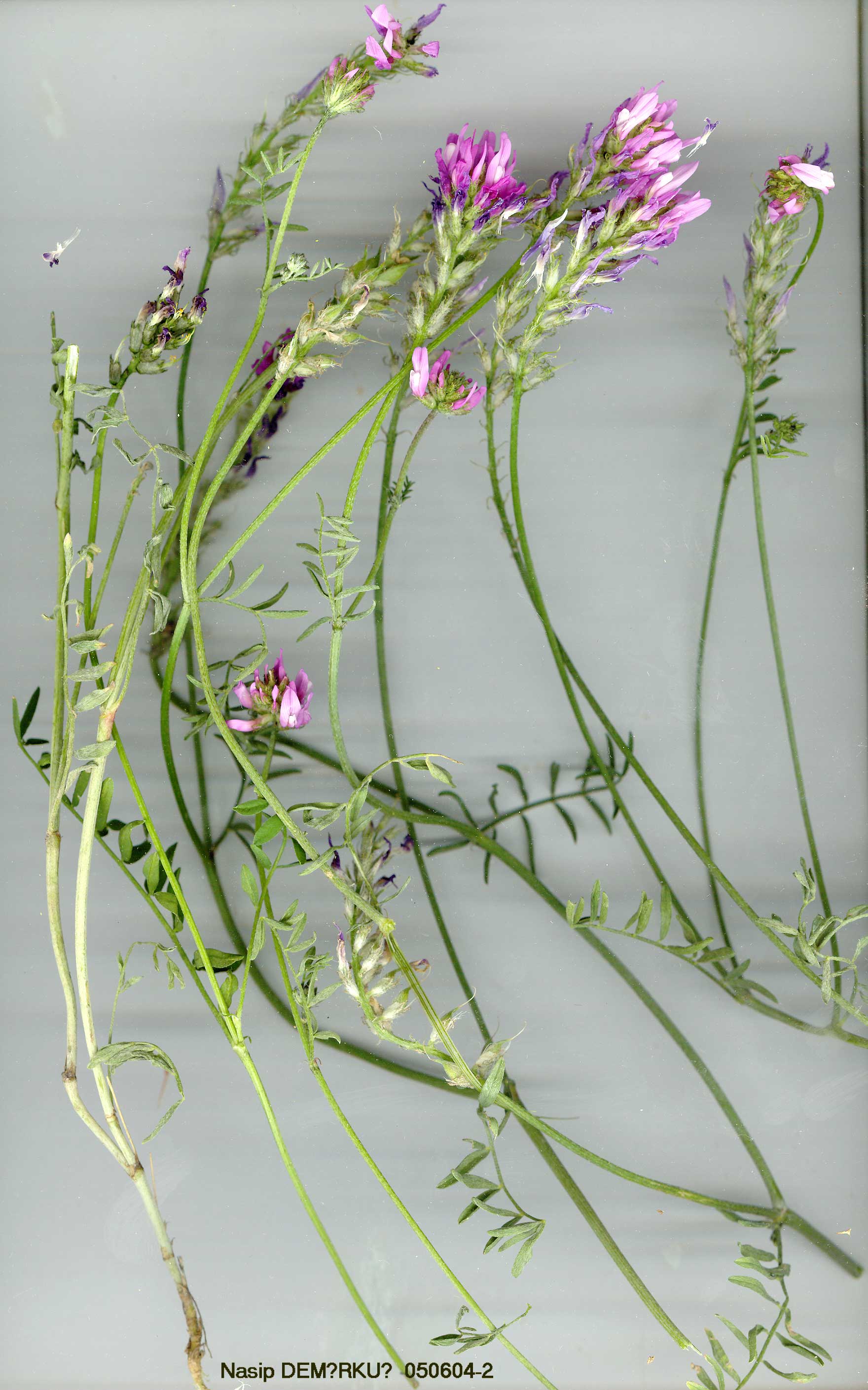| Fabaceae |
|---|
 Astragalus perrarus BORISS. |
Astragalus L. |
| A. perrarus Boriss. in Not. Syst. (Leningrad) 10:48 (1947). Erect or ascending, perennial herbs, 25-50 cm, with branched woody caudices; stems 25-50 cm. Leaves 5-8 cm; leaflets 4-10 mm, narrowly elliptic, bifurcate-sericeous, 6-14-paired; stipules 2-3 mm, ovate-lanceolate, free. Peduncles 3.5-8.5 cm. Inflorescence 2-2.5 cm diam., a dense, globose, 18-25-flowered raceme, much elongating in fruit. Bracts c. 2 mm, lanceolate. Calyx 8-11 mm, campanu-late, shortly black and white simple-setulose; teeth 3-4 mm, linear. Corolla lilac or violet; standard 16-21 mm, glabrous. Legume 11-12 xc. 3 mm, oblong-lanceolate, white-hispid, erect; beak c. 3 mm, curved. Fl. 6. Hillsides, c. 2300 m. Type: [Soviet Armenia] in viciniis urbis Erevan, prope pagum Kanahir in decliviis lapidosis et argillosis, 18 vi 1936, W. Tranzshel (holo. LE, photo!). E. Anatolia, B10 Van: 3-4 km NE of Başkale, 2300 m, D. 44514! Soviet Armenia. The Turkish specimen cited above agrees well with material determined by Mandenova as A. perrarus. It is, however, less robust generally than the type, and does not have any fruit. A specimen from B9 Bitlis (Van G.. 24 km W of Erciş, Cheese & Watson 1346!) may also belong to this species, but differs in apparently having young flowers that are pale lilac, becoming rosy purple on maturity. Whatever the status of these two plants, A. perrarus should occur in Turkey, especially in or near the Aras Valley, since it grows just over the border in Soviet Armenia. |
